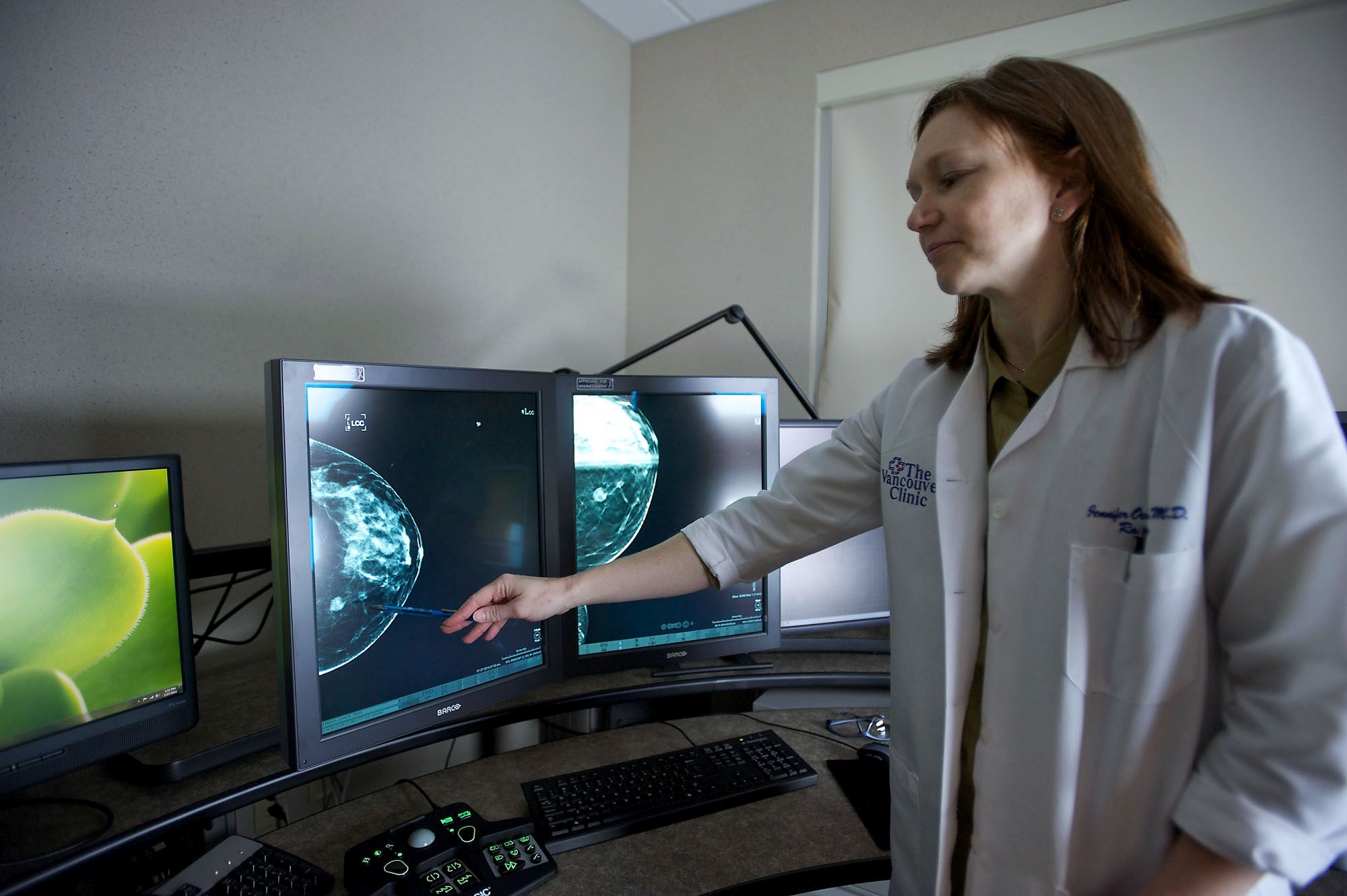A Canadian study challenging the need for annual mammograms has prompted women across the country to question whether they need the yearly X-rays.
In Clark County, radiologists have an answer similar to their counterparts elsewhere in the U.S.: Yes, annual mammograms are still important.
“We’ve had a lot of questions from women when they come in,” said Dr. Jennifer Ochsner, a radiologist at The Vancouver Clinic’s Breast Care Center. “Questions are great. Questions are good. Scientific articles are great, no matter the result. But in this case, I don’t think the data should change anything.”
The American Cancer Society recommends that women 40 and older should have a mammogram and clinical breast exam every year. That recommendation has not changed, even in light of the recent study.
The recently published study followed nearly 90,000 women in Canada for up to 25 years to compare breast cancer incidence and mortality between women who received mammograms and those who did not.
The study concluded that annual mammography doesn’t lead to a reduction in breast cancer mortality for women 40 to 59 years old beyond that of physical breast exams alone or usual care in the community. And, researchers concluded, about 22 percent of screened breast cancers were overdiagnosed, meaning the cancer was harmless and wouldn’t cause symptoms or death during the patient’s lifetime.
“The data suggest that the value of mammography screening should be reassessed,” the researchers said.
But the study, Ochsner said, technically isn’t new. The findings, which were published last month in the British Medical Journal, were following up on the women who took part in the Canadian National Breast Screening Study in the 1980s.
“This is the only randomized, controlled study that has not shown mortality reduction,” Ochsner said. “It was an outlier then. It’s not surprising that 25 years later, it’s still not showing a reduction.”
The study split the women into two groups: the mammography group, which received annual mammograms for the five-year screening period, and the control group, which was not screened. The screening centers closed in 1988, but researchers followed the women diagnosed with breast cancer until June 1996. Researchers then followed up with the study participants and published those results last month.
In the 25-year period, 3,250 women in the mammography group and 3,133 in the control group were diagnosed with breast cancer. Among them, 500 women in the mammography group and 505 in the control group died from breast cancer.
“The data do not support a benefit for mammography screening,” the researchers concluded.
But experts in the field, and local radiologists, disagree with the findings and argue the initial study was flawed.
“It was criticized at the time. It surprises me they would take a study criticized at the time and rework it and bring it back to life,” said Dr. Erik Kilgore, one of the owners of Vancouver Radiologists and the medical director of imaging at Legacy Salmon Creek Medical Center.
Many experts have challenged the quality of the mammograms used in the study, according to the American Cancer Society.
Mammograms are meant to find small, nonpalpable cancer, but about 68 percent of women diagnosed in the mammography group had cancer that could be felt in the breast.
Ideally, mammograms would reveal cancer smaller than 1 centimeter, Ochsner said. Those are the masses too small to feel in breast exams, she said. But in the study, cancers detected among the mammography group averaged about 1.9 centimeters.
The study design also may have influenced the results. Women who had signs and symptoms of breast cancer, such as a lump in the breast, were included in the study even though screening is meant to be used on women who have no symptoms, according to the American Cancer Society.
While the Canadian study didn’t find an advantage to mammography screening, numerous other studies have.
“The key to saving lives is to find things early,” Kilgore said. “Screening mammograms are good at doing that.”
The five-year survival rate is lower among women with more advanced-stage cancer, according to the American Cancer Society. The survival rate for women with localized cancer, that is cancer confined to the breast, is about 99 percent. For women with distant cancer, which has spread to distant organs, the survival rate is 24 percent, according to the cancer society.
In addition, breast cancer mortality rates in the U.S. dropped 34 percent from 1990 to 2010, according to the American Cancer Society. That decline is attributed to early detection and treatment improvements.
Ochsner and Kilgore worry flawed studies, such as the Canadian study, will dissuade women from getting mammograms, even though such organizations as the American Cancer Society continue to recommend annual screening beginning at age 40.
“Screening mammograms continue to be an important tool in reducing breast cancer deaths,” Ochsner said.
“So in my opinion, yes, women should still get screening mammograms,” she added. “Definitely.”




